ParaView under the spotlights
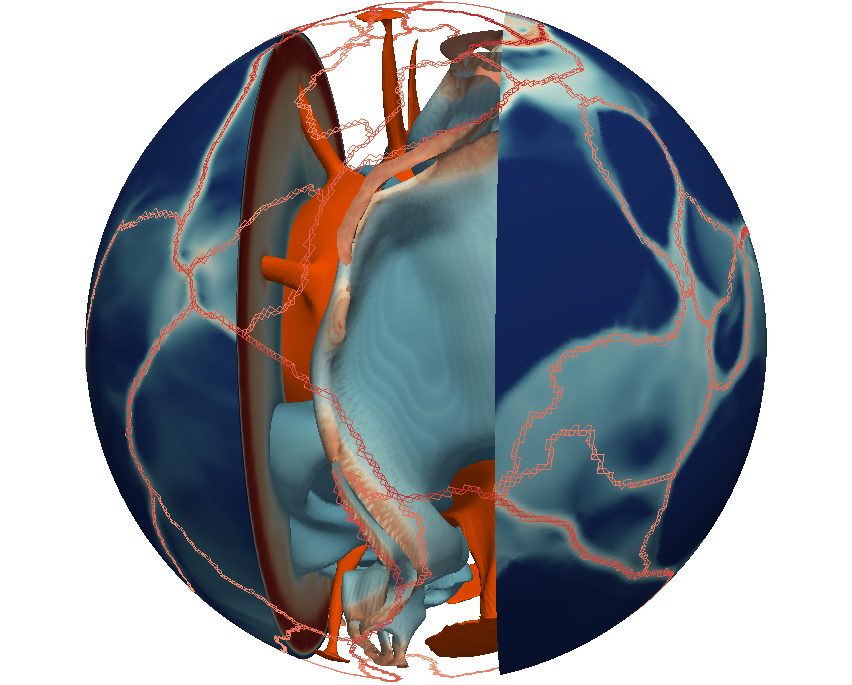

At Kitware, we provide collaborative research, development, and technology integration services for companies and research labs that work in the geological business sectors.
As part of a series that highlights many of the applications that we developed in collaboration with our customers, this post features our joint research and development efforts with the Laboratoire de Géologie de Lyon, France. These efforts focused on automatically retrieving tectonic plates from simulations of the Earth mantle flows.
Laboratoire de Géologie de Lyon: The Research Lab
The team of the Laboratoire de Géologie de Lyon, with which Kitware worked, is run by Prof. Nicolas Coltice, a top-level researcher who recently got a prestigious ERC Consolidator Grant. European Research Council grants are awarded to researchers and are quite comparable to US NSF grants, but more flexible since you can use it to hire more students or reduce teaching.
Prof. Coltice obtained this ERC grant to fund the AUGURY project (2014-2019), which aims at reconstructing Earth’s mantle convection using advanced models, over the millions of years from the early Earth to now.
There is no ground-truth data with which to compare as the models simulate the evolution of Earth from its early moments, so the standard way to assess the validity of the models is to compare the final tectonic plate statistics with the ones observed today.
Laboratoire de Géologie de Lyon gets the cover of Nature, with a Paraview-rendered image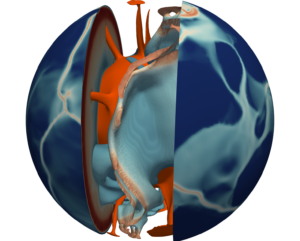
In May, Claire Mallard, a PhD Student under Prof. Coltice’s supervision, learned that the article she wrote with her colleagues entitled Subduction controls the distribution and fragmentation of Earth’s tectonic plates was accepted for publication in Nature, and the publication committee quickly asked if she could provide more of the “nice looking” images of her article. These images were rendered using Paraview, so it was straightforward to re-render high-resolution versions.
July 7, was the day the cover of the weekly issue of Nature appeared, featuring the image she rendered with a Shaping the Earth title. What an achievement.
Need: Why the Laboratoire de Géologie de Lyon came to Kitware
In order to compare the statistics of the simulated results with the observed distribution of tectonic plates, a tedious work of manual plate segmentation was done. It involved looking at the simulated physical properties of the mantle near the surface, such as the viscosity, pressure, temperature, velocity, and strain-rate and using the geological knowledge to interpret where plate boundaries could be. This work usually required hours for each simulation result, and a significant amount of simulation had to be process in order to be statistically relevant.
Because of the huge amount of volumetric data that the simulation is generating (gigabytes per simulation timestep), the Laboratoire de Géologie de Lyon already uses ParaView to visualize their data. When they learned that Kitware had a neighbooring office (literally a 10 minutes walk) doing Computer Vision, it seemed obvious to ask if Kitware could automate the segmentation process.
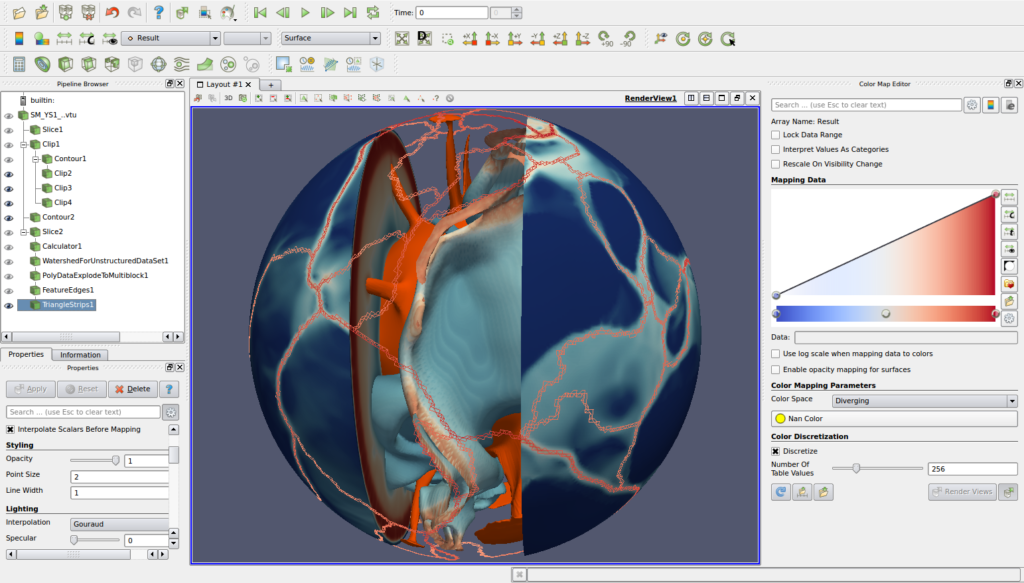
Custom VTK and Paraview filters developed by Kitware
As the segmentation process looked very similar to the well-studied image segmentation problem, Kitware chose to implement traditional image-processing techniques to work on a vtkPolyData mesh.
The new filters that have been developed are the following:
- Non-maximum suppression (works on vtkDataSet)
- This filter takes a scalar-field and a vector-field as input, and sets the scalar values to zero if they are not locally maximal along the vector-field direction
- Hysteresis Thresholding (works on vtkDataSet)
- This filter takes a scalar-field as input and two thresholds (low and high). It sets non-strong scalar values to zero. Strong values are those over the high threshold, or between the low and high threshold and neighbor of a strong value.
- Distance field computation (works on vtkPolyData)
- This filter takes a binary scalar-field as input and compute the distance of each vertex to the closest vertex with non-zero binary-field value.
- Watershed Segmentation with a merging threshold (works on vtkDataSet)
- This filter labels vertices and cells using the watershed segmentation algorithm. It assigns a bassin-Id label to each element depending on which bassin a drop of water will end up if dropped. It ignores small bassins of configurable size (aka. puddle)
- vtkPolyData cells splitting to multiblock based on cell data (works on vtkPolyData)
- This filter split a vtkPolyData to a multiblock, one block per discrete value of the input field
- Polyline export to OGR-GMT shapefile (GMT ASCII Vectors) only considers lines of a vtkPolyData
- This exporter enables writing polylines as OGR-GMT shapefile and is widely used in the tectonic plate research field
Used in conjunction of each others, those filters enable the automatic extraction of plate boundaries, squeezing hours of manual work into a few minutes.
Open-source to help the whole community move forward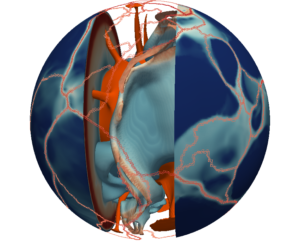
The mantle researcher community and tectonic plates community were using different approaches and tools until now: continuous and local simulations on one side and discrete plate-wide simulation on the other. Thanks to the huge improvements in computational power, the two fields are now slowly converging and use continuous methods. In order to share their progresses and help other teams to compare both approaches, the team of Prof. Coltice made the remarkable choice of making the aforementioned filters open-source to help spread the scientific knowledge.
Note: a downsampled version of the three-dimensional (3D) data used for the Nature cover rendering is visible on our website [40MB page], thanks to the straightforward WebGL export!
To learn more about how we can tailor solutions to meet your research needs, please contact kitware@kitware.com.
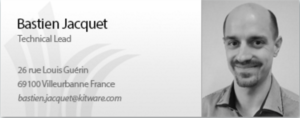 Bastien Jacquet is Technical Lead at Kitware in France. He promotes and extends Kitware’s Computer Vision expertise in Europe. His PhD research investigated the different aspects of 3D reconstruction of multi-body scenes from images. Bastien is passionate about 3D reconstruction. Bastien received a dual/diplome d’Ingenieur /(M.Eng.) from École Polytechnique Paris and École des Ponts ParisTech as well as an MSc. in Applied Mathematics, specializing in Mathematics, Computer Vision and Machine Learning, from ENS Cachan (France) in 2010.
Bastien Jacquet is Technical Lead at Kitware in France. He promotes and extends Kitware’s Computer Vision expertise in Europe. His PhD research investigated the different aspects of 3D reconstruction of multi-body scenes from images. Bastien is passionate about 3D reconstruction. Bastien received a dual/diplome d’Ingenieur /(M.Eng.) from École Polytechnique Paris and École des Ponts ParisTech as well as an MSc. in Applied Mathematics, specializing in Mathematics, Computer Vision and Machine Learning, from ENS Cachan (France) in 2010.
hello, when will be those filters (e.g. Watershed Segmentation) available in Paraview distribution?
Hello Martina,
We do not have a clear timeline for distributing them along Paraview.
Nevertheless, the filters can be compiled right now together with Paraview (tested with Linux and OS X) from our repositories:
https://gitlab.kitware.com/bjacquet/UCBL-PV
Best,
Bastien